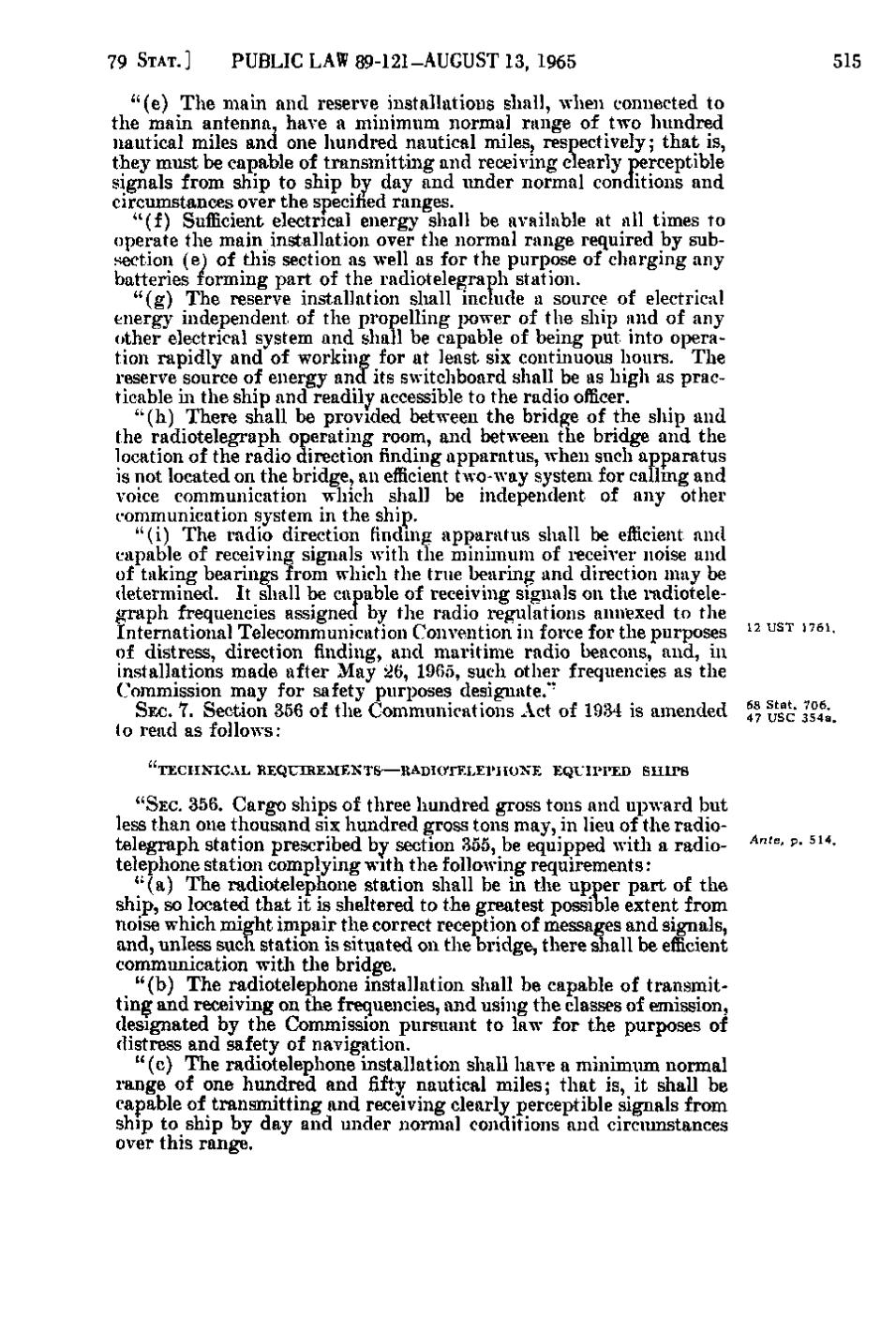79 STAT.]
PUBLIC LAW 89-121-AUGUST 13, 1965
"(e) The main and reserve installations shall, when connected to the main antenna, have a minimum normal range of two hundred nautical miles and one hundred nautical miles, respectively; that is, they must be capable of transmitting and receiving clearly perceptible signals from ship to ship by day and under normal conditions and circumstances over the specified ranges. " (f) Sufficient electrical energy shall be available at all times to operate the main installation over the normal range required by subsection (e) of this section as well as for the purpose of charging any batteries forming part of the radiotelegraph station. " (g) The reserve installation shall include a source of electrical energy independent of the propelling power of the ship and of any other electrical system and shall be capable of being put into operation rapidly and of working for at least six continuous hours. The reserve source of energy and its switchboard shall be as high as practicable in the ship and readily accessible to the radio officer. " (h) There shall be provided between the bridge of the ship and the radiotelegraph operating room, and between the bridge and the location of the radio direction finding apparatus, when such apparatus is not located on the bridge, an efficient two-way system for calling and voice communication which shall be independent of any other communication system in the ship. "(i) The radio direction finding apparatus shall be efficient and capable of receiving signals with the minimum of receiver noise and of taking bearings from which the true bearing and direction may be determined. It shall be capable of receiving signals on the radiotelegraph frequencies assigned by the radio regulations annexed to the International Telecommunication Convention in force for the purposes of distress, direction finding, and maritime radio beacons, and, in installations made after May 26, 1965, such other frequencies as the Commission may for safety purposes designate.'" SEC. 7. Section 356 of the Communications Act of 1934 is amended to read as follows:
515
'^ "^^ ^^^^•
J^ us'c 35 43 ^*^.
" T E C H N I C A L REQUIREMENTS—RADIOTELEPHONE EQUirPED SHIPS
"SEC. 356. Cargo ships of three hundred gross tons and upward but less than one thousand six hundred gross tons may, in lieu of the radiotelegraph station prescribed by section 355, be equipped with a radiotelephone station complying with the following requirements: " (a) The radiotelephone station shall be in the upper part of the ship, so located that it is sheltered to the greatest possible extent from noise which might impair the correct reception of messages and signals, and, unless such station is situated on the bridge, there shall be efficient communication with the bridge. "(b) The radiotelephone installation shall be capable of transmitting and receiving on the frequencies, and using the classes of emission, designated by the Commission pursuant to law for the purposes of distress and safety of navigation. "(c) The radiotelephone installation shall have a minimum normal range of one hundred and fiitj nautical miles; that is, it shall be capable of transmitting and receiving clearly perceptible signals from ship to ship by day and under normal conditions and circumstances over this range.
Ante, p. 514.
�
